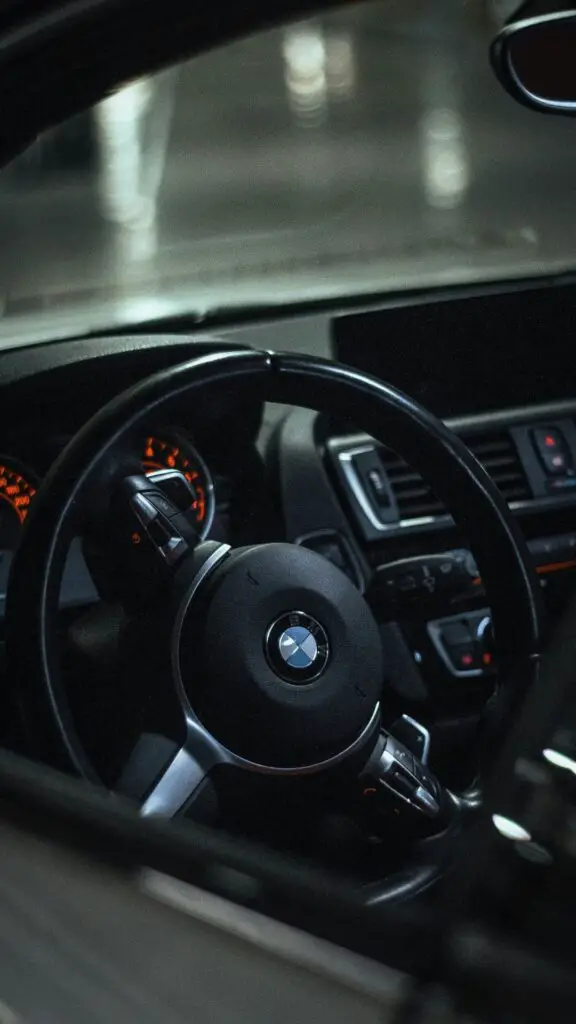Phone:
(701)814-6992
Physical address:
6296 Donnelly Plaza
Ratkeville, Bahamas.


The check engine light is an essential alert that indicates potential issues in your BMW. When it turns on, it’s often a sign that the vehicle’s onboard diagnostic system has detected a problem with the engine or its components. Many BMW owners have experienced this issue and while sometimes it’s a minor problem, it can also signal serious concerns that need immediate attention. This article explains the possible causes, diagnostic steps, and solutions to help you resolve this issue effectively.

The check engine light (CEL) is part of the onboard diagnostics (OBD-II) system, which monitors the performance and health of various engine components. It illuminates when the system detects a fault that requires attention.
In BMW models, the CEL can be triggered by numerous issues, including fuel system faults, ignition problems, or issues with sensors. Understanding these triggers is crucial to diagnosing and resolving the issue.
The OBD-II system monitors emissions, fuel injection, ignition, and other key components. When it detects a problem outside the normal range, it activates the CEL.
A steady light usually signals a less severe issue, while a flashing light indicates a potentially serious problem, such as a misfire, that requires immediate attention.
There are a variety of reasons your BMW’s check engine light may activate. Identifying these causes can help you take the right steps to resolve the issue.
A loose or damaged fuel cap is one of the simplest causes. It can cause a vacuum leak in the fuel system, leading the CEL to turn on.
Fuel injectors can become clogged or damaged, affecting fuel delivery and triggering the CEL. Regular fuel injector maintenance can help prevent this issue.
Worn-out spark plugs or ignition coils can cause misfires, leading to increased emissions and poor engine performance, which activates the CEL.
Engine misfires are a serious concern that can damage the catalytic converter if left unchecked. A flashing CEL usually indicates a misfire that needs immediate diagnosis.
Oxygen sensors monitor exhaust gases, adjusting fuel-air mixture for optimal combustion. When they malfunction, fuel efficiency drops, and the CEL lights up.
The catalytic converter reduces emissions, and any issue with it can trigger the CEL. Failure to address catalytic converter problems can lead to increased emissions and reduced performance.
A weak battery or charging issues can cause the CEL to activate as the system struggles to maintain power to essential components.
Faulty wiring or poor electrical connections can lead to intermittent CEL activation. Checking connections can prevent these issues.
Once the CEL is on, diagnosing the issue is the next step. A systematic approach can help you pinpoint the root cause without unnecessary expenses.
An OBD-II scanner can read diagnostic trouble codes (DTCs) that provide clues about what triggered the CEL. Plugging in the scanner and reading the codes can help you or your mechanic understand the issue.
Codes like P0171 (lean fuel mixture) or P030X (misfires) are common in BMWs. These codes can guide you toward the specific problem area.
Start with simple checks, like tightening the fuel cap and inspecting connections. These basic steps can sometimes resolve the issue without further intervention.
Inspecting the battery and spark plug connections can reveal loose or corroded connections that may be causing the CEL to activate.
Here are specific solutions for the most common causes of a BMW CEL, from fuel system issues to electrical problems.
If the CEL is due to a loose or damaged fuel cap, tighten it securely or replace it if necessary. This simple fix often resolves the CEL.
Regularly using fuel system cleaner and ensuring timely maintenance of injectors can prevent clogs that trigger the CEL.
Spark plugs and coils should be replaced according to BMW’s maintenance schedule to prevent misfires and improve performance.
If misfires persist, inspect the ignition system, fuel injectors, and sensors. Addressing these promptly helps avoid damage to the catalytic converter.
Oxygen sensors have a limited lifespan. Replacing them as recommended by BMW can resolve the CEL and improve fuel efficiency.
Regular exhaust system inspections help prevent catalytic converter issues, which are costly but essential for reducing emissions.
If the battery is weak, replace it to avoid further electrical issues. A healthy battery is essential for stable system performance.
Tightening or repairing loose connections in the wiring can prevent the CEL from turning on due to intermittent electrical faults.
Taking preventive measures can help you avoid many CEL-related issues, keeping your BMW in top shape.
Regular diagnostic checks, at least once a year, can detect minor issues before they trigger the CEL, saving you time and money.
Emissions checks ensure that your vehicle meets standards and keeps the engine running efficiently, reducing the likelihood of CEL activation.
Inspecting and replacing spark plugs and ignition coils as needed improves engine performance and prevents misfire issues.
Check the fuel cap regularly and consider periodic fuel injector cleaning to maintain optimal fuel delivery and performance.
A flashing CEL usually indicates a severe issue, such as a misfire, that requires immediate attention to prevent damage.
While you may be able to drive, it’s advised to have it checked as soon as possible, especially if the light is flashing.
After resolving the issue, the CEL can be reset with an OBD-II scanner. However, if the issue isn’t fixed, the light may turn on again.
Codes like P0171 (lean fuel mixture) and P030X (misfires) are common and provide insight into specific engine issues.
Repair costs vary based on the issue. Minor problems like a loose fuel cap are inexpensive, but sensor replacements and catalytic converter repairs are pricier.